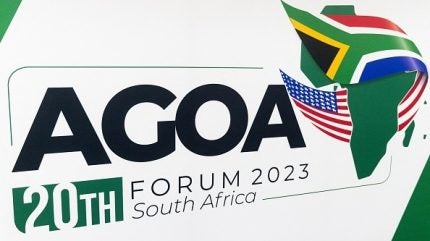
The African Growth and Opportunities Act (AGOA) expired on Tuesday 30 September after being in place for 25 years (it was renewed for ten years in 2015).
Multiple envoys from African countries have travelled to Washington, DC to negotiate a renewal and have expressed optimism that a deal will be reached.

Discover B2B Marketing That Performs
Combine business intelligence and editorial excellence to reach engaged professionals across 36 leading media platforms.
A White House official told Reuters that US President Donald Trump supports a one-year renewal.
However, uncertainty looms given the recent US government shutdown and the US tariff regime that began in April.
“AGOA is a legislation that needs to come from Congress. It needs to be approved both in the House and the Senate,” Luz Maria de la Mora, UNCTAD’s director of the division of international trade and commodities, tells Investment Monitor. “When we have seen governments shutting down, basically, there is no administrative work. This is important for African countries, of course, but we cannot consider this an urgent matter for the US.”
The AGOA was implemented in 2000 to provide duty-free access to thousands of products from 32 countries, primarily in sub-Saharan Africa, to the US market.

US Tariffs are shifting - will you react or anticipate?
Don’t let policy changes catch you off guard. Stay proactive with real-time data and expert analysis.
By GlobalDataThe agreement is viewed as having mixed results, with critics saying it did not fully live up to its promise of enabling meaningful and sustainable trade with the US. However, it has been consequential to the apparel sector of various countries in the region, such as Lesotho, Kenya and Madagascar.
Kenya, for example, exported $470m (Ks60.72bn) worth of clothing to the US in 2024, supporting more than 66,000 direct jobs, mostly held by women, according to the Kenya Private Sector Alliance.
The lack of renewal comes at a particularly hard time because the duty free advantages the member countries enjoyed had already been diluted as a result of the US’ ‘reciprocal’ tariffs scheme.
“When AGOA expires there is no duty free, and now they have to face most-favoured-nation tariffs and, in addition, they have to stack up a reciprocal tariff. For some countries it is 10%, for some 15% but for some it can be 40%. So that is a double impact,” Mora says. “The exports under AGOA amount to $10bn, which is really nothing when you see that total imports to the US are more than $3trn.”
Trump’s tariffs are based on the argument that many of the US’ trading partners hold a trade deficit with the US. “They are ripping us off,” he said of other countries when he announced the tariffs in April.
Mora highlights that the deficit of many AGOA member countries with the US is minimal and represents less than 1% of total US imports.
Aside from textiles and goods in the apparel sector, fuels and metals account for most of the other imports traded under the AGOA. Critics of the agreement highlight that the continuation of raw material exports without further industrialisation has limited development.
Mora argues that the AGOA made member countries more attractive investment destinations partly because of the certainty it provided to investors. In terms of how the agreement could be improved, she says linking “sectors to investors that are ready to add value at home, both in the industrial part and in the services part”.
If the AGOA isn’t renewed, it is likely that beneficiary countries will turn to alternative trade partners, including through the Africa Continental Free Trade Area.
For now, despite the trade agreement having bipartisan support in the US, it is likely that any renewal will only occur in a few months.





